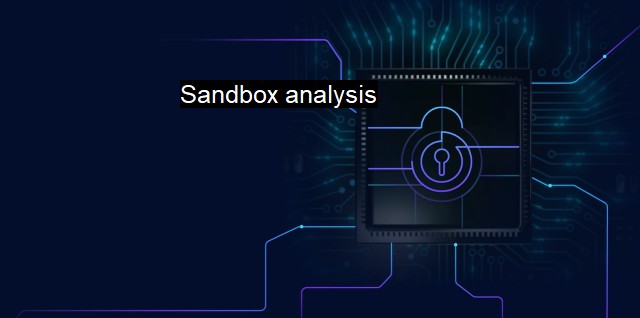What are Sandbox analysis?
The Power of Sandbox Analysis in Cybersecurity: Mitigating Malware Threats Without Damaging Your Network
Sandbox analysis is an advanced technique used to detect, analyze and neutralize potential threats to a computer system. This innovative approach is framed in the burgeoning field of threat intelligence, and simulates an environment that allows suspicious code to execute and reveal its potential threat, hence the term "sandbox."Before exploring the function and significance of sandbox analysis, a brief understanding of its foundational principle - the sandbox itself - is warranted. Derived from the playground sandbox where children can play and create without the fear of causing any real-world damage, a digital sandbox operates similarly. In computing parlance, a sandbox refers to a safe, isolated environment where applications or programs can run without the risk of damaging or affecting the host system. The changes that a program might make within a sandbox remain strictly within it, thereby preventing any malware or possibly harmful entities from infecting the larger system.
Sandbox analysis builds upon this concept and has become a crucial part of advanced antivirus solutions and cybersecurity methods. When an unknown file or program enters the system, sandbox analysis executes this suspicious entity on a clone version of the current operating system -- inside the imitation environment of the sandbox. it is like a parallel reality where malicious behaviour can be exposed without any casualties, and preventative measures can be promptly taken based on the observations.
In cybersecurity and antivirus applications, sandbox analysis provides a more in-depth analysis of potential threats. It not only executes potential malware in a completely isolated environment, but it also looks at what the software does: how it behaves, what areas of the system it targets, what changes it attempts to make and what data it tries to steal or corrupt. This behavioural data from the sandbox helps cybersecurity professionals and antivirus software to better understand the threat, how it operates, and how best to deny its interventions.
Since sandbox analysis allows a suspicious program to be run since its startup, it can trace the program's actions right from its initiation - something older antivirus programs that use definitions or signatures cannot accomplish. This ability to discern sophisticated codes can be invaluable when dealing with zero-day vulnerabilities - threats that exploit the system vulnerabilities unknown to the vendor and therefore don't have a fix yet. In such cases, sandbox analysis can detect and neutralize threats before they affect the actual operating environment.
Sandbox analysis is not flawless. Advanced malware and ever-evolving cyber threats can detect sandbox environments and alter their behaviours to appear benign. the complexity and cost of sandbox implementations could pose a limit to its usability. Despite these drawbacks, it remains an integral part of the multilayered defence approach for cybersecurity.
Sandbox analysis is an indispensable part of effective cybersecurity strategies and advanced antivirus solutions. It affords a deeper look into the motives and actions of a potential threat in a safe, mirror-like environment, revealing its arsenal before any actual damage is incurred. It is no wonder then that as threats grow more complex, the applications and evolution of sandbox analysis models also continue to keep up in what is an ongoing chess match in the digital world of cyber security.

Sandbox analysis FAQs
What is sandbox analysis in cybersecurity?
Sandboxing in cybersecurity is a technique of isolating suspicious files or programs in a secure environment to analyze their behavior and determine their level of threat. This is usually done to identify and thwart malware attacks.How does sandboxing complement antivirus protection?
Antivirus software alone is not enough to protect a system from sophisticated threats. Sandboxing adds an extra layer of security by providing a controlled environment to analyze and detect unknown threats that may slip past the antivirus.What are the benefits of sandbox analysis for businesses?
For businesses, sandboxing helps identify potential threats that could disrupt their operations and compromise sensitive data. By analyzing the behavior of various files and programs, sandboxing enables businesses to pinpoint and mitigate potential risks before they become full-blown cyber attacks.How is sandbox analysis different from traditional malware analysis?
Traditional malware analysis typically involves reverse-engineering the code of a malicious program to identify indicators of compromise. Sandbox analysis, on the other hand, observes the behavior of the program in a controlled environment to detect potential threats. While traditional analysis is useful for known threats, sandboxing enables organizations to detect new and unknown threats that evade traditional detection methods.| | A | | | B | | | C | | | D | | | E | | | F | | | G | | | H | | | I | | | J | | | K | | | L | | | M | |
| | N | | | O | | | P | | | Q | | | R | | | S | | | T | | | U | | | V | | | W | | | X | | | Y | | | Z | |
| | 1 | | | 2 | | | 3 | | | 4 | | | 7 | | | 8 | | |||||||